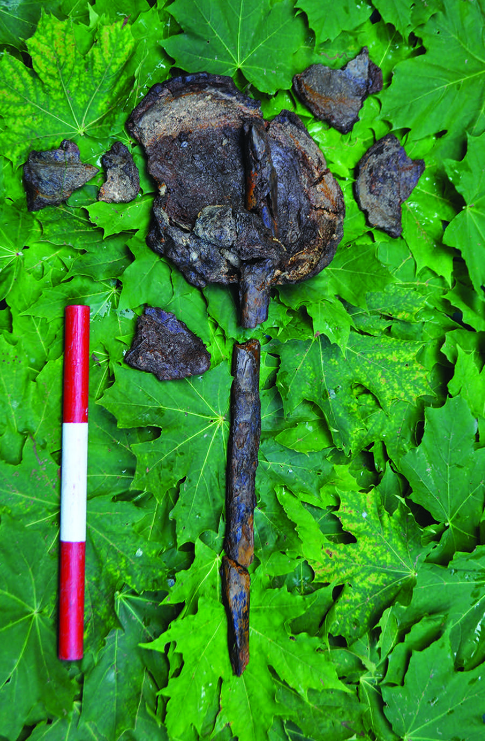nivek
As Above So Below
8,000-Year-Old Heads on Stakes Found in Mysterious Underwater Grave
The discovery of a burial containing 8,000-year-old battered human skulls, including two that still have pointed wooden stakes through them, has left archaeologists baffled, according to a new study from Sweden.
It's hard to make heads or tails of the finding:
During the Stone Age, the grave would have sat at the bottom of a small lake, meaning that the skulls would have been placed underwater. Moreover, of the remains of at least 11 adults placed on top of the grave, only one had a jawbone, the researchers said.
The burial did contain other jawbones, although none of them, except for an infant's, were human. While excavating the site, archaeologists found various animal bones, including dismembered jawbones and arms and legs.

Traumatic blows
Seven of the adults, including two of the females, showed signs of "blunt-force trauma" on their skulls, the researchers wrote in the study. But this trauma didn't kill them, at least not immediately, because all of the skulls showed signs of healing, Hallgren said.
"Somebody gave them love and care after this [trauma] and healed them back to life again," he said.
An analysis shed some light on the ancient carnage: The majority of the trauma happened above the hat line, which "is an indication that this trauma is the result of violence between humans," Hallgren said. What's more, the men tended to have trauma on top of and on the front of their heads, while the women's injuries were located on the backs of their heads, the researchers said.
Even more astounding were the wooden stakes found in two of the skulls. One stake had broken, but the other was long, about 1.5 feet (47 centimeters) in length, and both likely served as handles or mounts for the skulls, Hallgren said. They found a piece of brain tissue inside the skull with the broken stake through it.
The fact that the 8,000-year-old brain didn't decompose suggests that the individual was placed in the water soon after death, Hallgren said. However, some of the other skulls may have been placed there long after death, as it's possible the site may have served as a second burial for them, Hallgren said.

Though mysterious, the underwater burial had an upside: it preserved the remains for posterity. The bottom of the lake was a low-oxygen environment, meaning there wasn't much oxygen available for bone-decaying microorganisms, Hallgren said.
The discovery of a burial containing 8,000-year-old battered human skulls, including two that still have pointed wooden stakes through them, has left archaeologists baffled, according to a new study from Sweden.
It's hard to make heads or tails of the finding:
During the Stone Age, the grave would have sat at the bottom of a small lake, meaning that the skulls would have been placed underwater. Moreover, of the remains of at least 11 adults placed on top of the grave, only one had a jawbone, the researchers said.
The burial did contain other jawbones, although none of them, except for an infant's, were human. While excavating the site, archaeologists found various animal bones, including dismembered jawbones and arms and legs.

Traumatic blows
Seven of the adults, including two of the females, showed signs of "blunt-force trauma" on their skulls, the researchers wrote in the study. But this trauma didn't kill them, at least not immediately, because all of the skulls showed signs of healing, Hallgren said.
"Somebody gave them love and care after this [trauma] and healed them back to life again," he said.
An analysis shed some light on the ancient carnage: The majority of the trauma happened above the hat line, which "is an indication that this trauma is the result of violence between humans," Hallgren said. What's more, the men tended to have trauma on top of and on the front of their heads, while the women's injuries were located on the backs of their heads, the researchers said.
Even more astounding were the wooden stakes found in two of the skulls. One stake had broken, but the other was long, about 1.5 feet (47 centimeters) in length, and both likely served as handles or mounts for the skulls, Hallgren said. They found a piece of brain tissue inside the skull with the broken stake through it.
The fact that the 8,000-year-old brain didn't decompose suggests that the individual was placed in the water soon after death, Hallgren said. However, some of the other skulls may have been placed there long after death, as it's possible the site may have served as a second burial for them, Hallgren said.

Though mysterious, the underwater burial had an upside: it preserved the remains for posterity. The bottom of the lake was a low-oxygen environment, meaning there wasn't much oxygen available for bone-decaying microorganisms, Hallgren said.
